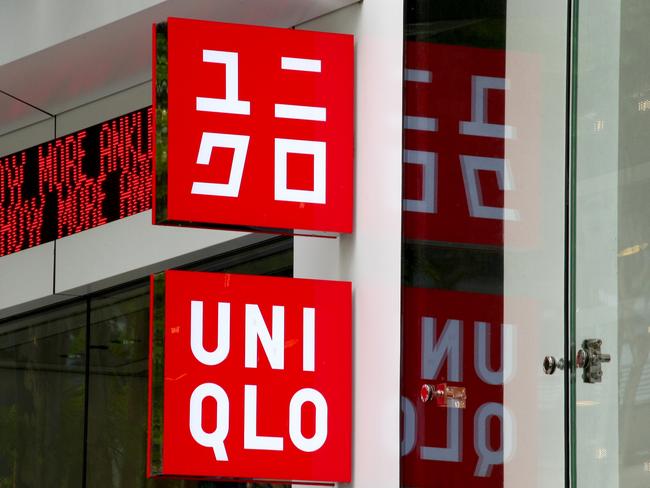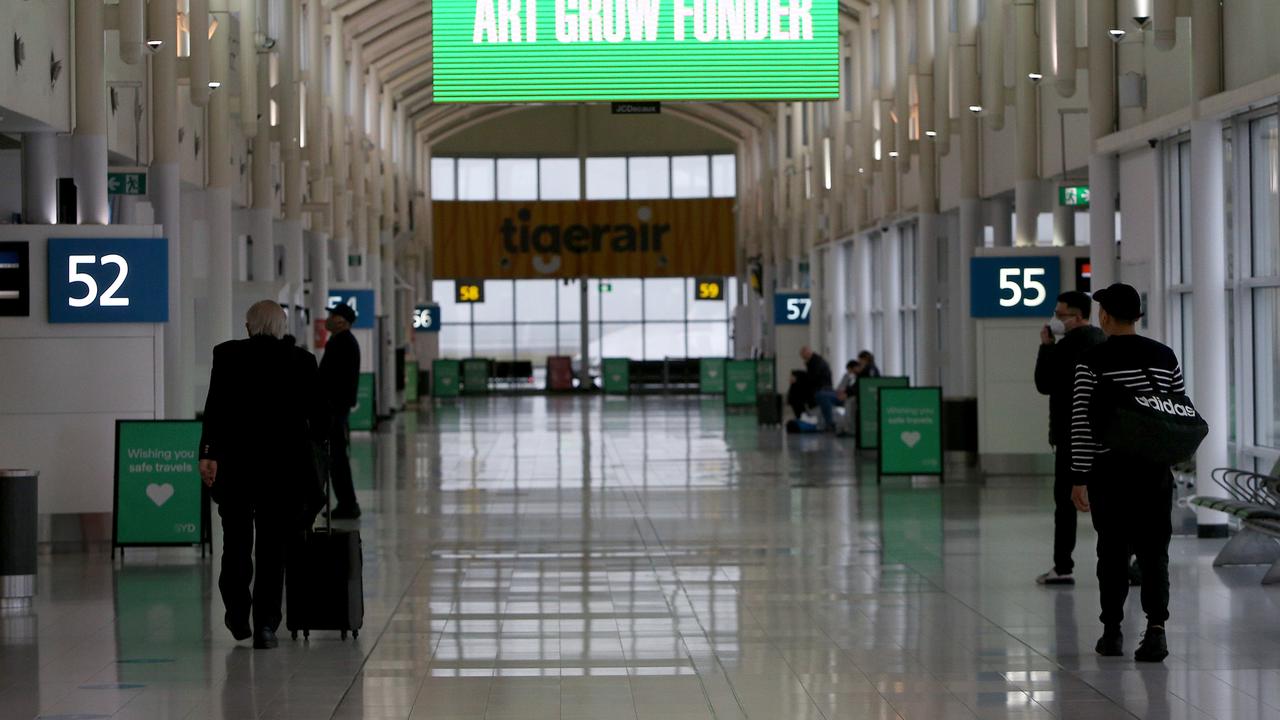Downfall of Target, the chain that wouldn’t move with the times
Just a decade ago, Target was the go-to store for everyday Australians, but with the announcement that 75 stores will now be shut and even more converted into Kmarts, how did it all go so terribly wrong?
Business
Don't miss out on the headlines from Business. Followed categories will be added to My News.
A crowded marketplace and an undifferentiated product range.
The rise of online shopping and the reinvention of Kmart. The arrival of the international titans of fast-fashion.
Together, they’ve delivered Target 1000 cuts over the past decade, retail experts say.
A major restructure of the Melbourne-based retailer by owner Wesfarmers will now result in its distinctive red bullseye logo being pulled from many of the nation’s shopping centres and strips, while some industry watchers question whether it will ultimately survive at all.
About half of the shops in the discount department store chain will either be shut or converted to the Kmart brand over the next year.

While significant, the deep retreat of one of the most famous brands in Australian retail was not a bombshell to anybody in the industry.
“There are no surprises here,” Queensland University of Technology retail expert Gary Mortimer told Business Daily.
“The Target brand has struggled in both sales and profit for a number of years — the only surprise here is that it took Wesfarmers this long to come to the decision it has.
“For Wesfarmers it simply makes more sense to invest their capital and time into a more successful brand, which they have in Kmart, and step away from that Target business.”
OFF TARGET
Wesfarmers, the Perth-based conglomerate whose retail holdings also include Bunnings, Officeworks and online business Catch Group, on Friday unveiled the biggest shake-up of Target in its 94-year history.
Up to 75 stores will be shut and as many as 92 will be converted to the highly successful Kmart brand.
There are 284 Target stores across Australia — 69 in Victoria — and the restructure will affect 167 outlets.
As it stands, the chain has 182 large-format Target stores and 102 smaller-format Target Country stores.
Between 10 and 25 Target stores will close, along with 50 Target Country stores.
Another 10 to 40 Target stores and 52 Target Country stores will be converted to the Kmart brand.
The dramatic overhaul will result in all small-format Target shops in regional areas being shut or converted to Kmart.

Last night, Target released an initial list of affected stores. In Victoria, 10 are closing and 13 will be rebadged.
Those closing include the stores at Bacchus Marsh, Bairnsdale, Benalla, Colac, Kerang and Langwarrin.
Also closing are Maryborough, Myrtleford, Traralgon and Warragul.
Wesfarmers has also warned many store conversions — expected to cost between $2 million and $4 million each — will only happen if landlords help shoulder some of the cost of the new fit-outs.
The restructure is expected to cost the group between $120 million and $170 million.
Wesfarmers will take a non-cash impairment of $430 million to $480 million on its department store division as it writes down the value of the Target brand.
Group chief executive Rob Scott said the retail sector had gone through significant change and disruption in recent years and this would only continue.
“We don’t see the Target business in its current form being financially viable and we have spent the past eight years trying to find a path forward,” he told Business Daily.
“We have looked at every way to retain stores.”
But he warned more Target stores could close.
“The group is continuing its assessment of strategic options for a commercially viable Target and its remaining store network, including further optimisation of the store network and changes to the operating model,” he said.
WHAT WENT WRONG?
Target traces its roots back to 1926 when George Lindsay and Alex McKenzie opened a drapery store in Geelong under a business model of “half the profit, twice the turnover”.
The business was bought by Myer in 1968. By then, it spanned 14 stores across Victoria and was called Lindsay’s Target.
Myer changed the name to Target Australia in 1973.
Wesfarmers bought Target and Kmart as part of a $19.7 billion takeover of the Coles Group in 2007, shortly after Coles jettisoned department store chain Myer.
Target peaked shortly after. In 2010, it threw off a record $3.8 billion in annual sales and generated a $380 million profit from a network that spanned 290 stores.
In 2019, it generated $2.81 billion in sales from a network of 285 stores.

Wesfarmers no longer breaks out Target’s bottom line but instead provides an overall earnings figure from its department store division, which includes Kmart.
The sales drop has come amid the rise in online shopping and the arrival since 2011 of international “fast-fashion” goliaths Zara, H&M and Uniqlo.
It has also coincided with an overhaul of Kmart, which has seen that chain emerge as the undisputed leader in the nation’s discount department store space.
“Target is operating in a $14 billion-a-year discount department store sector that is overcrowded, it’s fairly undifferentiated and the only player with a story is Kmart,” said Brian Walker, founder of consultancy Retail Doctor Group.
“Target Australia is really bearing the brunt of being undifferentiated and not that particularly interesting … it doesn’t have a uniqueness about it.”
Mr Walker said heavy discounting by Myer in recent years had put further pressure on Target as it had tried to position itself more in the mid-market space, while cost cutting had resulted in a smaller range of products and dated stores.
Target had failed to build the kind of brand excitement Kmart had, much of it done via social media, he said.
“Kmart has been very successful in building a cheap and chic branded story — that is a huge part of its success,” Mr Walker said.
“Target, on the other hand, just sat there. It has got older, its fixtures got older and its shops got duller.”

QUT’s Dr Mortimer said the impact of Guy Russo on Target’s lacklustre performance should not be underestimated.
Mr Russo was the retail whiz who took over an underperforming Kmart in October 2008.
He left the business a decade later, having more than doubled sales to $6 billion and the increased profit more than five-fold, to almost $600 million. At the same time, Target churned through a succession of leaders including former Officeworks boss Launa Inman, former Sears Canada chief Dene Rogers and former Coles executive Stuart Machin.
“He (Russo) did a far better job than anyone expected,” Dr Mortimer said.
“He cleared out a lot of brands from Kmart, he stripped price points and he really repositioned Kmart as an everyday low-price discount department store business which was constantly on trend.
“Kmart simply cannibalised the foot traffic and sales of Target.”
IS THIS THE END?
Mr Scott, from Wesfarmers, said he continued to see a future for Target but warned that its prevailing business model was unsustainable.
“This is about giving Target a better opportunity for a sustainable future,” he said.
“There have been many changes in the retail landscape, it’s been a very competitive and disrupted sector and there are a number of challenges within the Target model that has caused it to lose relevance with customers.”
Others were not so sure.
Dr Mortimer struggled to see how Target would ultimately survive in the discount department store space, especially given the most recent trading updates from rival retailing group Woolworths show its Big W chain is beginning to get its mojo back.
“I ultimately think that in the coming years, Wesfarmers will take an axe to the brand and we may not see a Target brand in Australia,” he said.
“It doesn’t make a great deal of sense for a conglomerate to run two discount department stores that are fundamentally competing with one another.”
Retail Doctor’s Mr Walker was not as pessimistic, but thought there would eventually be more store closures.
He noted Wesfarmers last year bought local online retail pioneer Catch Group and wonders if Target will ultimately emerge as an e-commerce business with just a handful of stores.
“Is it possible that we will see Target as primarily an online marketplace?,” Mr Walker asked.
“The Catch acquisition is very interesting.
“Target has a well-known and recognised brand, it plays in merchandise that is increasingly the domain of online so why would you have all these heavy overheads in rentals for spaces that don’t particularly provide a differentiated experience.”
TARGET STORE CHANGES IN VICTORIA (PRELIMINARY LIST)
STORES CLOSING
Bacchus Marsh
Bairnsdale
Benalla
Colac
Kerang
Langwarrin
Maryborough
Myrtleford
Traralgon
Warragul
STORES CHANGING TO KMART
Ararat
Castlemaine
Cobram
Echuca
Hamilton
Kyabram
Lakes Entrance
Leongatha
Mansfield
Portland
Seymour
Woodend
Yarrawong
READ MORE
WESFARMERS OPEN TO SELLING TARGET
Originally published as Downfall of Target, the chain that wouldn’t move with the times


